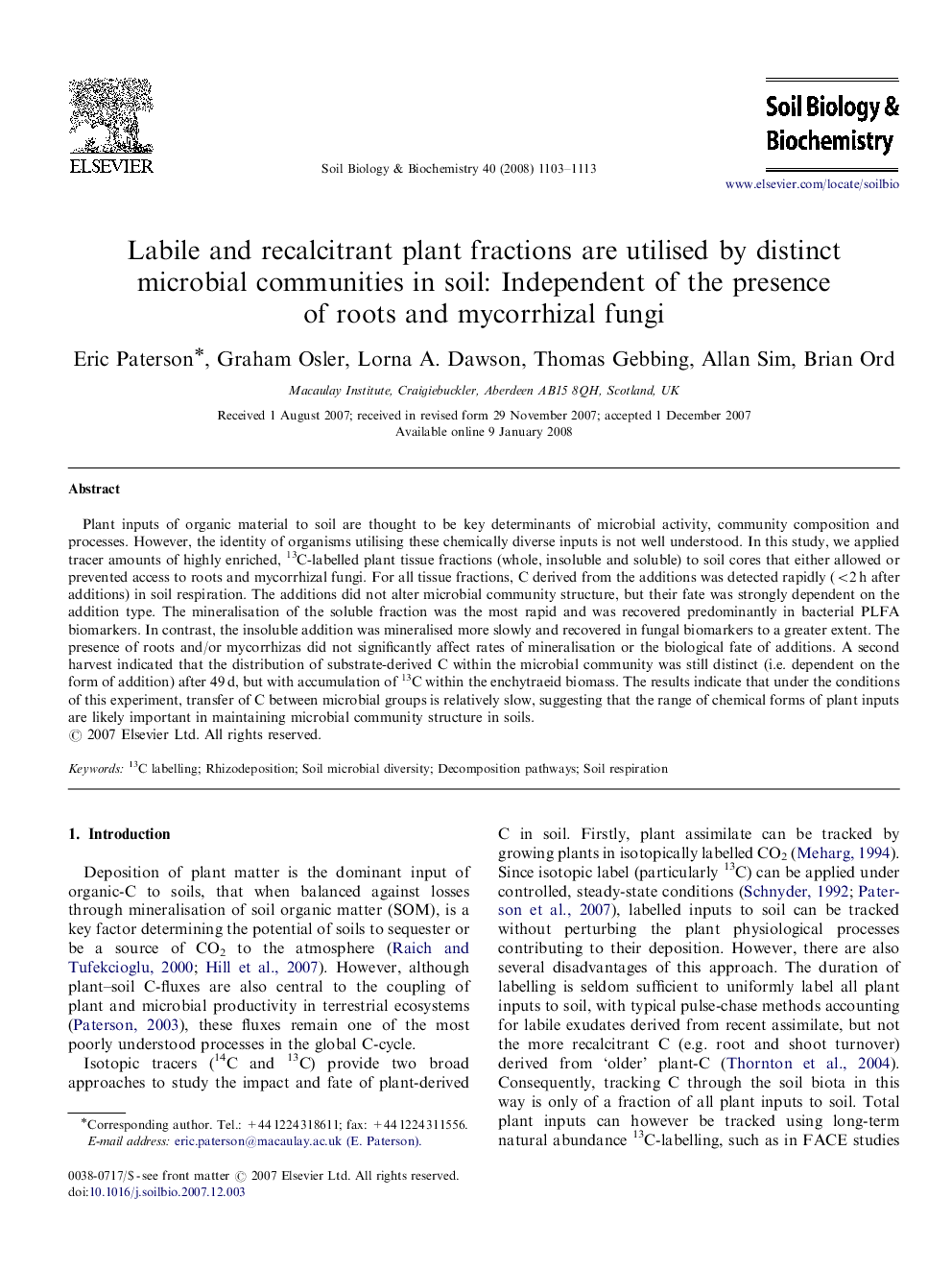| Article ID | Journal | Published Year | Pages | File Type |
|---|---|---|---|---|
| 2026026 | Soil Biology and Biochemistry | 2008 | 11 Pages |
Plant inputs of organic material to soil are thought to be key determinants of microbial activity, community composition and processes. However, the identity of organisms utilising these chemically diverse inputs is not well understood. In this study, we applied tracer amounts of highly enriched, 13C-labelled plant tissue fractions (whole, insoluble and soluble) to soil cores that either allowed or prevented access to roots and mycorrhizal fungi. For all tissue fractions, C derived from the additions was detected rapidly (<2 h after additions) in soil respiration. The additions did not alter microbial community structure, but their fate was strongly dependent on the addition type. The mineralisation of the soluble fraction was the most rapid and was recovered predominantly in bacterial PLFA biomarkers. In contrast, the insoluble addition was mineralised more slowly and recovered in fungal biomarkers to a greater extent. The presence of roots and/or mycorrhizas did not significantly affect rates of mineralisation or the biological fate of additions. A second harvest indicated that the distribution of substrate-derived C within the microbial community was still distinct (i.e. dependent on the form of addition) after 49 d, but with accumulation of 13C within the enchytraeid biomass. The results indicate that under the conditions of this experiment, transfer of C between microbial groups is relatively slow, suggesting that the range of chemical forms of plant inputs are likely important in maintaining microbial community structure in soils.
